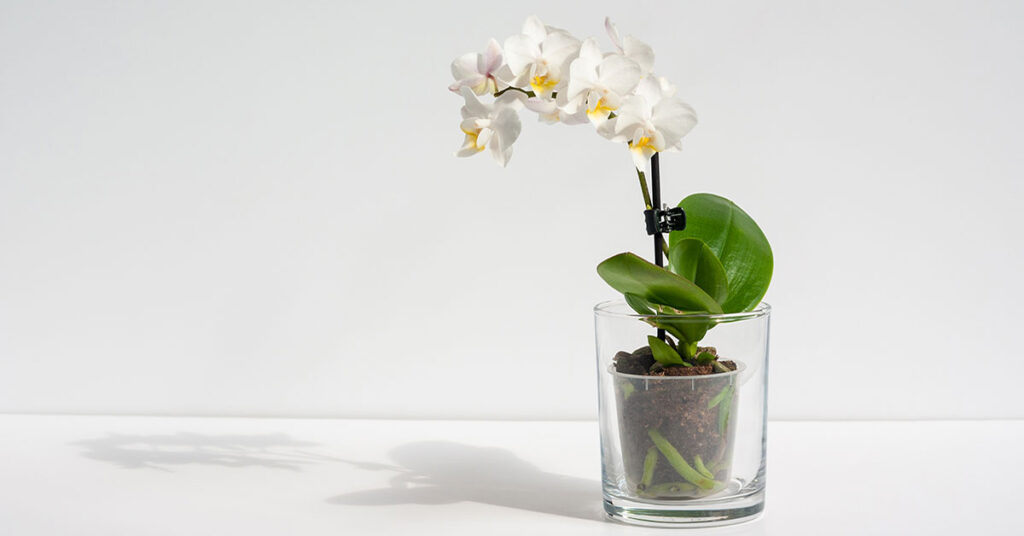Orchids are much more solid than pop culture would have us believe! They are not fragile at all, they tend to flower more than once no matter their environment, and they can live for a couple of years.
Watering your orchid
Like many other indoor plants, orchids need to be watered when they’re thirsty. Knowing the mood of an orchid is quite simple. The vast majority of them come in transparent plastic pots that are in fact very important. When the plant is thirsty, its roots become gray and pale, and go back to luscious green when they’ve drunk enough.
The watering frequency depends entirely on the humidity of your environment, but your orchid will tell you in no time how much water it needs. To water it, leave it in its pot, then fill it with water. Leave it to soak for around fifteen minutes, or until the roots become completely green again. Take it out from its pot and drain it well, before putting it back in its now-empty pot.
Fertiliser
If you want to add fertiliser to your plant, for the flowers to grow bigger and last longer, for example, it is absolutely necessary for it to be an orchid fertiliser. Dissolve it in water and soak the plant, or crush it into a powder and deposit it directly onto the roots. It is also very important not to give fertiliser to the plant right after it bloomed as it’s in a period of rest.
Repotting
Repot the orchid only when it has become too big for its pot and multiple roots are coming out. The new pot should be a little bigger than the last one, with a maximum of 2 cm added to its diameter.
Sun exposure
An orchid shouldn’t be in direct sunlight, because it could dry or burn.
Leaf, flower and root care
Orchids don’t need much pruning, but some parts do wither or dry. The dried roots need to be cut off when repotting using gardening shears. Yellowed or brown leaves are taken out from their base by hand, in one swift move. The withered flowers can be taken out delicately a little before they naturally fall, to avoid parasites. Finally, the stem itself should be cut off when dry, after the flowers have bloomed and fallen. After the first blooming period, cut to the first knot in the stem. For all the subsequent blooming periods, cut to the base of the plant to encourage growth and health.
In conclusion, orchids seem much more complex than they are in reality. Any information that oyu could possibly need to care for your lies right here!



